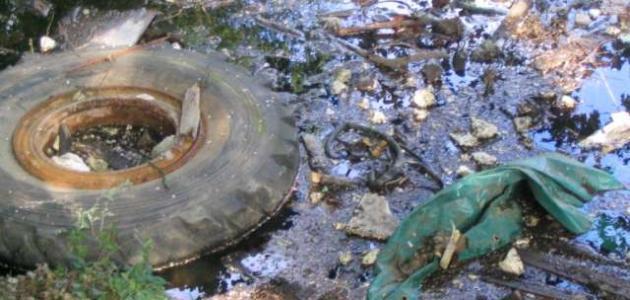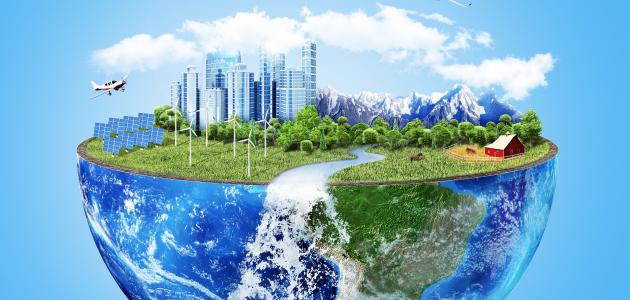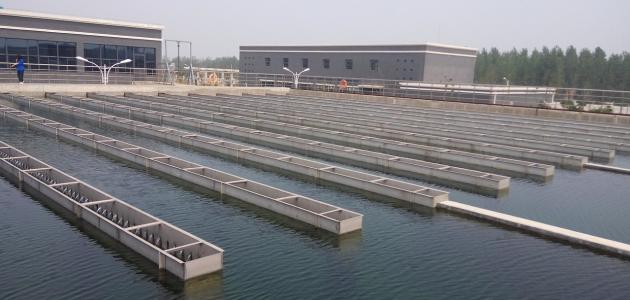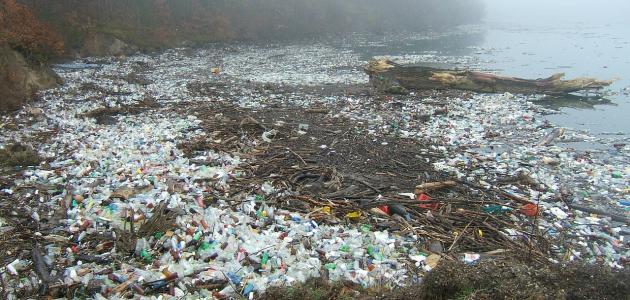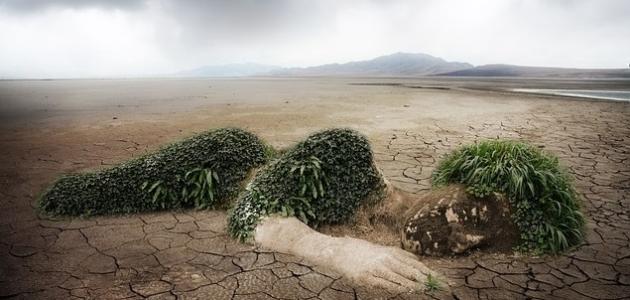Definition of soil pollution
The term soil pollution refers to the accumulation of some materials, such as: toxic compounds, salts, chemicals, radioactive materials, and all disease-causing factors in the soil, which negatively affect the growth of plants and the health of animals and humans. The reason for the presence of such pollutants in the soil is due to human activities, but they can form naturally, such as the accumulation of mineral elements in the soil in concentrations greater than the permissible limit. Soil pollution constitutes a hidden danger to the environment. It is difficult to directly determine whether the soil is contaminated or not with the naked eye.
The factors that lead to soil pollution are the following:
- Waste leaks from its landfills into the soil.
- Discharging factory waste into the soil.
- Penetration of polluted water into the soil.
- Explosion of underground storage tanks.
- Excessive use of pesticides and fertilizers.
- Solid household waste seeps into the soil.
When is the soil contaminated?
Soil is classified as polluted if it has lost many of the necessary physical, chemical, and biological properties, which is referred to as (soil health), which is a common term among farmers, while scientists call it (soil quality). The following points explain some of those properties that can The soil loses it and becomes polluted:
Read also:What are the causes of environmental pollution- The soil should be adequately mixed with organic matter.
- The soil structure must be good.
- Soil should be home to a variety of organic organisms.
These characteristics can be achieved in a natural environment if the soil achieves a balance between itself and its environmental surroundings, but they require human intervention to improve them if there is a defect in the presence of one of the characteristics. Healthy soil contributes to reducing erosion processes, and also helps improve the quality of water and air. It is worth noting that soil health is closely linked to human health, that is, the more deteriorated the soil health is, the less nutritional value its crops are, and the less people benefit from them.
Soil Pollution Sources
Pollution from a point source
Point-Source Pollution is defined as pollution that results from the release of pollutants into the soil in a specific area. As a result of a specific event or series of events, it is therefore easy to determine what the pollutants are and their source. Point-source pollution is more widespread in urban areas, where the main reason for its occurrence is due to human activities, such as:
- Old factory sites.
- Waste and wastewater.
- Leaking oil spills.
- Waste dumping sites that violate conditions.
- Excessive use of chemicals in agriculture.
- Aromatic hydrocarbons and toxic metals associated with petroleum products.
- Mining and smelting operations that occur in poor environmental conditions.
- Various industrial activities.
Pollution of non-point source
Nonpoint source pollution or diffuse pollution (in English: Diffuse Pollution) refers to pollution that accumulates in the soil extending over large areas, where its source cannot be easily determined. Due to the presence of several sources that cause it to occur, which contributes to its spread over a greater extent in the air, water and soil, therefore, determining its spatial scope and tracking it is a difficult challenge, so scientists need to increase their scientific and technical efforts to discover and develop new methods to be able to measure, monitor and understand the sources of this disease. The type of pollution, and the extent of its spread on the planet. Examples of non-point source pollution include:
Read also:What is thermal pollution- Nuclear Energy.
- Weapons remnants.
- Improper waste disposal.
- Liquid waste leaking into or near water bodies.
- Waste resulting from wastewater treatment operations.
- Pesticides and fertilizers used in agriculture.
- Persistent organic pollutants.
- Excess nutrients and agrochemicals transported by runoff into rivers.
- Floods.
- Soil erosion.
- Atmospheric deposition, where the atmospheric transport of natural or human-generated pollutants from certain areas and their deposition in other areas has contributed to increasing the amounts of metals in the upper layers of the soil.
The most important types of soil pollutants
Biological factors and some human activities, starting with agricultural operations in which many chemicals are used to exterminate agricultural pests, in addition to urban and industrial waste, and ending with radioactive emissions that lead to soil contamination with various toxic substances, are among the most important factors leading to soil pollution, and can be summarized as follows: Come:-
- Vital factors: These agents reach the soil and contaminate it through the seepage of manure, human and animal waste into the soil.
- Agricultural activities: Substances used in agriculture, such as pesticides, weed killers, fertilizers, and others, pollute the soil of agricultural crops.
- Radioactive pollutants: The leakage of radioactive pollutants, such as radium, thorium, uranium, nitrogen, and others into the soil, makes it toxic and unusable.
- Urban waste: It is the materials resulting from garbage, dry waste resulting from wastewater and drinking water treatment, and wastewater resulting from domestic and commercial waste.
- Factory waste: It is the waste resulting from the manufacture of steel, pesticides, textiles, medicines, glass, cement, petroleum, and others.
effects of soil pollution
Soil pollution causes huge disturbances in the environmental balance, which puts the health of all living organisms at risk. The most important effects of soil pollution are as follows:-
Read also:Causes of groundwater pollution- Causing many health risks as a result of direct (such as using lands full of pollutants) and indirect (such as drinking contaminated water in the area) contact with contaminated soil, such as: migraines, nausea, fatigue, and other health problems.
- Crops do not grow in contaminated soil. If this happens, the plants will absorb toxic chemicals from the soil, which may lead to many health problems for their consumers.
- Increased soil salinity, then the land becomes unsuitable for agriculture and barren.
- Drying the soil, destroying its fertility, and killing the beneficial organisms that live in it. Pollution may even affect predatory organisms such as birds that will change their living place to get their food.
Solutions to the problem of soil pollution
There are some proposed solutions to control soil pollution, the most important of which are as follows:-
- Extraction and separation techniques: The extraction technique includes the removal of some metals such as cadmium, copper, zinc, nickel, chromium, arsenic, organometallic compounds, cyanide, and others using a sodium hydroxide solution, while the separation technique is applied when fine or coarse-grained soil is contaminated, where the soil is separated into parts Based on particle size, specific gravity, or sedimentation speed.
- Thermal methods: It is done through:
- Removal of pollutants by the evaporation process by transferring heat directly through hot air or flame, or indirectly, and destroying the pollutants at an appropriate temperature directly or indirectly, then the gas rising from the heating device is treated to remove pollutants or unwanted materials. .
- Steam abstraction: It involves injecting steam into the soil to contribute to the evaporation of volatile pollutants, regardless of whether they are soluble in water or not.
- Chemical methods: The soil is treated by placing it in a suspension containing a suitable solution. Contact between the soil and the chemical solution must be essential, and the process must be repeated until it is certain that the toxin removal process has ended.
- Microbial treatment methods: It is considered the most effective method; Because of its ability to deal with most organic pollutants, such as: phenol, polychlorinated hydrocarbons, oil and its products, and dioxins, where a hole is dug in the soil, and microbes are placed on top of it using many techniques such as fertilization, plowing, and others.
- Reducing the use of agricultural chemicals: Such as using fertilizers and chemical pesticides and replacing them with biofertilizers and pesticides.
- Reuse some materials: Such as glassware, plastic bags, paper, and clothes instead of disposing of them, which leads to reducing solid waste pollution.
- Material recycling: Recycling some materials, such as paper, some types of plastic, and glass, contributes to preserving natural resources and reducing the increase in the volume of waste, as recycling 1 ton of paper contributes to preserving 17 trees from being cut down and destroyed.
- Reforestation: It contributes to reducing land loss, reducing soil erosion, and increasing its fertility, through planting plants, rotating crops, or planting more than one crop in the same place at the same time.
- solid waste treatment: This is done using physical, chemical, or biological methods, so that they become less dangerous to the soil, through:
- Balancing the acidity and sourness of waste, so that non-degradable materials become decomposable under certain conditions before disposal.
- Burying waste in areas far from residential neighborhoods.
